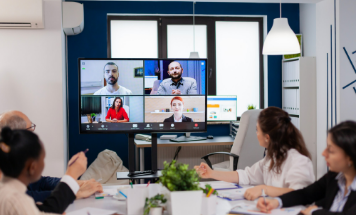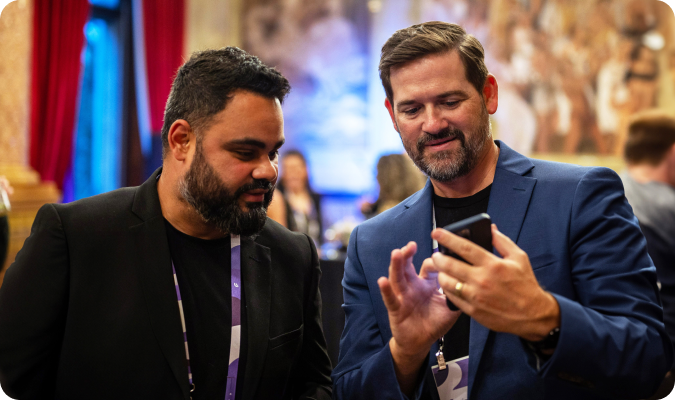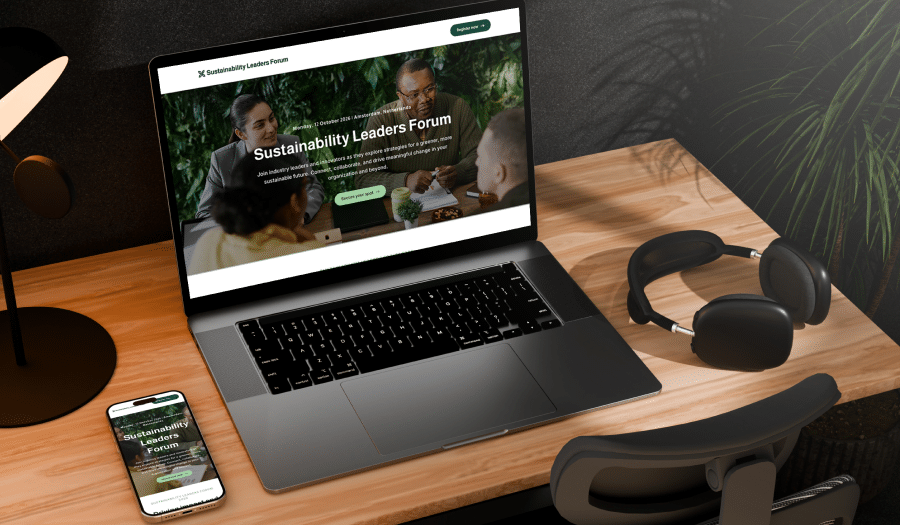
So your boss has asked you to plan a virtual or hybrid meeting.
“Everyone’s doing it, so it can’t be that hard to organize and implement,” your boss says. “Let’s use some tech tools to reach our current customers and new ones as well. It’s just operating online software. How difficult can it be?”
We get it: you feel overwhelmed, worried you’ll mess it up, and fearful of the consequences. Besides, you have no idea where to start!
You’ve got this covered!
Set yourself up for success by understanding the challenges of events with online components.
Multitasking, distracted attendees, online but physically absent audiences, delays in livestream or audio, bandwidth and connectivity issues, inferior cameras and video quality, feeble microphones, poor placement of microphones, bad lighting, and background noises all can combine to create a negative digital meeting experience. And frustrated participants. But pre-planning can help you avoid and fix these issues.
It’s more than just software (although the right software helps a lot)
Planning and managing a digital event requires some new skills, so tell your boss you need time and support to get this right. Even seasoned meeting professionals may underestimate what’s involved. You need to more than just schedule some speakers and “operate the digital event software.” Your presenters may need help, too, as they’ll need to adapt their style to suit online delivery.
Virtual or online conferences require:
- an extra level of attention to details and planning,
- being familiar with and practicing beforehand so you know exactly how to use any technology and online collaborative tools you plan to use,
- a team approach so your coworkers or volunteers can help manage participant questions and answers and troubleshoot any technology glitches,
- presenters with a high-energy delivery style,
- experienced facilitators with the skills to engage your remote audience, and the ability to read virtual body language, to help gather responses throughout the session, and
- thoughtful, authentic, relevant learning design to keep your audiences engaged.
15 Guidelines for Planning and Leading Virtual and Hybrid Events That Wow
1. Remember: technology alone won’t move the needle for your conferences—in-person or virtual.
Successful digital events depend on how the technology is used, not the tech itself. For example, employing conference technology to increase participant engagement won’t automatically result in increased audience engagement. It’s the design and flow of the digital presentation coupled with authentic opportunities using those tech tools to encourage participation that matters.
2. Ask participants to perform a tech check-in to test their connection and computers well beforehand.
Attendees can’t successfully participate in your digital or hybrid conference if their tech isn’t up to it. Advise and urge them to test their computer and connection when they register for your event, not right before the meeting starts.
3. Be prepared.
Sure, being ready for your event goes without saying. But proper preparation can’t be emphasized enough! Create an agenda for you and your team to follow. Then stick to it. Virtual and hybrid conferences are often strictly constrained by time, so stick to start and end times religiously.
4. Develop an online experience where participants feel safe and comfortable, and don’t fear rejection when responding.
While some people feel more able to speak up online, others become incredibly shy. If everyone’s silent when questions are asked, you may need to reassure them and ask someone you know in the audience to volunteer to go first. Letting everyone know that all comments and questions will be treated respectfully is important when people aren’t in the same room. Ask your audience to text you their location and what they see out the closest window within the first 30 seconds of your event. Then provide ample opportunities throughout the event to engage your audience using those tools. And if possible, don’t hold Q&As until the end of the presentation.
5. Respect participants’ time and schedules.
Remember that many of your attendees have busy schedules and may have work they need to finish. Don’t let sessions drag on.
6. Preload all meeting materials into the digital platform and allow participants to access it.
In addition to preloading material, send links to registered participants in an email several days before the event (see how to automate this process with EventsAir’s event marketing tools). You may want to release presenter slide decks during or after the presentation.
7. Play some light or upbeat music that your participants will hear as they login.
Nothing is worse than logging in to a virtual meeting and hearing deathly silence, because it’s natural to wonder if you’re in the wrong place or at the wrong time, or if your audio isn’t working. Occasionally interrupt the music with an announcement that you’ll start in a few minutes. Alternatively, you can have a short rotating PowerPoint deck with brief text announcements (“the meeting will begin soon”) on the screen. Or use an automated countdown clock for the start time.
8. Provide an audio alternative for visually-impaired participants, low-bandwidth regions, those driving and unstable Wi-Fi connections.
Kind of self-explanatory. Ideally, you should also provide options for hearing-impaired participants, such as text captioning and/or sign language interpretation.
9. At the start of your digital conference, give a brief overview of the platform and how to use tools such as text chat, raising your hand, polling, white board, asking questions, discussion rooms, and access to conference documents, etc.
Again, this one doesn’t really need an explanation.
10. Be camera conscious but not self-conscious when using video cameras.
Relax, and smile. You look great! However, you should avoid wearing stripes, plaids and checked clothing which can create dizzying vertigo-like visuals. Also avoid bright blue and emerald green as they can mimic green screens.
11. Maintain a reasonable distance from the camera.
The audience doesn’t need to see the coffee stain on your shirt or up your nostrils. The concept of personal space applies to your livestreaming capabilities just as it would in-person.
12. Don’t shout.
Use a dedicated microphone and speak normally. Use the same voice you would use when communicating across a table.
13. Act naturally and normally.
Use gestures, facial expressions, notes and graphics just as you would for face-to-face conferences. Since you are speaking to a camera, study how news reporters use voice inflections and head movements to engage their viewers. Stand in front of a mirror and practice using similar methods.
14. Increase your energy level as you lead the event online and ensure that same enthusiasm is used throughout the event.
Share your passion and enthusiasm for the topic. If your energy level wanes, you may come across as boring and droning on about nothing of importance. Watch how television weather reporters get excited about reporting today’s weather even though it’s usually a repeat of the previous day.
15. Don’t confuse your digital conference with Hollywood.
Remind yourself that the most important part of your virtual or hybrid conference is the participants’ experience, and their ability to make sense of your content and what it means to them. Don’t get hung up on adjusting cameras, directing action, framing shots and slick production. Your audience prefers authentic, sincere visuals. They are very comfortable with user-made videos online and YouTube. They often think highly produced videos are sales gimmicks.
Ultimately, as author and digital presenter Timothy J. Koegel says, “Life is not broadcast quality, so don’t expect your virtual meeting to be.”
Confused or need help with your virtual or hybrid meetings?
Your best bet is to use an all-in-one-video-conferencing and live-streaming tool like EventsAir Hybrid Event Solution Suite that includes the following components:
- AIRCast Studio – which remotely controls and incorporates multiple audio, visual, onsite, and online inputs to deliver synchronized, high-quality experiences for both virtual and in-person audiences.
- Remote Device Control – which deploys and drives PTZ (pan/tilt/zoom) cameras and integrates audio feeds and remote projectors using EventsAir no-lag real-time streaming sync technology.
- The Events App – which syncs your virtual, in-person and mobile experiences so your audience can access your event via live streams, discussion forums, Q&As, live polling, gamification and breakout rooms.
- AIRCast Interpretation Studio – which allows your event sessions and presentations to be simultaneously translated and disseminated in any language from anywhere in world via audio or sign language.
- Accessibility – which includes features such as closed captioning and live sign language translation that can be added in real time to all your events.
- A Virtual Operations Center (VOC) – which provides access to an experienced team of AIRCast Producers, Tech Directors, Virtual Event Coordinators and EventsAir Solution Specialists that use a purpose-built state-of-the-art control center designed to manage, produce, and support your event.
Contact the EventsAir team to chat about how we can help you with your event needs today!
Attendee Experience | Best Practice | Event Planning & Management | Hybrid Events | Virtual Events
See EventsAir in action
Discover why 12,000+ event professionals trust EventsAir to deliver effortless events, every time.




